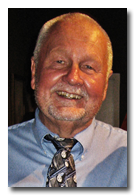Once the financial niche of seedy storefront shops in low-income neighborhoods, the payday advance loan business is going mainstream. Of course they’re not called payday advances, but “direct-deposit loans” by the big-time bankers. Indeed, these loans (or advances as they’re referred to) are essentially the same whether they’re offered by Ace Cash Express, or by U.S. Bank, or Wells Fargo. Regions Bank and Fifth 3rd Bank are also participants.
These loans are designed as “bridge loans” to solve cash shortages between paydays. They appeal to those individuals and families who “live paycheck to paycheck” and those with unanticipated “emergencies.” An Associated Press article by Candice Choi (Miami Herald, 8/26/11), reports that some major banks are already providing them to their customers and that other financial institutions are considering offering these highly profitable loans.
Interest Rates “Through the Roof!”
A typical payday loan will cost $16 for every $100 borrowed. This calculates to over 400% annual interest rates! Your friendly banker will charge about half this rate and it will amount to a measly 200-250%. Banks can offer the lower rates (lol) because they have better security (the direct deposit goes directly into your account that they maintain), and they already have sophisticated systems, and a network of branches in place. These interest rates are almost stratospheric, and are 10 to twenty times the typical credit card rate, which is already high.
A Merry-go-Round of Debt
Because of the short due dates and high interest rates once a customer gets on this merry-go-round it’s hard to get off. So borrowers often get trapped in a vicious, costly, depressing cycle of debt where they need the next loan to pay for the living expenses they incurred by using part of their budget to pay for their previous loan. The poor, unemployed, or marginally employed people, and those relying on government benefit programs are most likely to fall into the trap.
There “Should be a Law”
Government regulators and consumer advocates are becoming increasingly sensitized to the problem, but strict regulations and penalties have not been implemented. Interestingly, although states may have usury statutes, banks are specifically exempted from interest rate limits. Some banks, like Wells Fargo, have independently reduced their fees and imposed borrower restrictions aimed at preventing abuse of the program.
What Should You Do?
Even if you’re facing a temporary financial predicament you should still avoid the temptation to use these loans as a solution. And if you can’t find a workable alternative at least try the bank and not the other lenders. Shop for the best terms.
Get financial counseling and advise others close to you about the pitfalls of these loans. If you’re already trapped in the payday/direct deposit loan cycle use every ounce of determination and sacrifice to bail yourself out. And if you’re so inclined write your congressman, https://writerep.house.gov/writerep/welcome or the Office of the Comptroller of the Currency at HelpWithMyBank.gov.
A Footnote
It is almost unbelievable to me that as economic conditions deteriorate lenders continue to find new ways to more efficiently exploit the already squeezed consumers. Borrowing rates are at record lows but credit card rates, consumer loans, etc., are at record high levels. If it wasn’t for all the bad loans financial institutions would be swimming in money.
